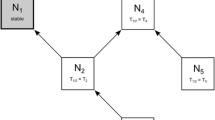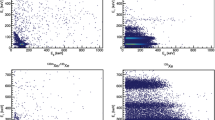Abstract
Popular nuclear spectral analysis applications typically use either the results of a peak search or of the best match of a set of linear templates as the basis for their conclusions. These well‐proven methods work well in controlled environments. However, they often fail in cases where the critical information resides in well-masked peaks, where the data is sparse and good statistics cannot be obtained, and where little is known about the detector that was used. These conditions are common in emergency analysis situations, but are also common in radio‐assay situations where background radiation is high and time is limited. To address these limitations, non‐linear fitting techniques have been introduced into an application called “Cambio” suitable for public use. With this approach, free parameters are varied in iterative steps to converge to values that minimize differences between the actual data and the approximating functions that correspond to the values of the parameters. For each trial nuclide, a single parameter is varied that often has a strongly non‐linear dependence on other, simultaneously varied parameters for energy calibration, attenuation by intervening matter, detector resolution, and peak-shape deviations. A brief overview of this technique and its implementation is presented, together with an example of its performance and differences from more common methods of nuclear spectral analysis.

Similar content being viewed by others
References
Marquardt DW (1963) J Soc Ind Appl Math 11:431–441
Bevington PR, Robinson DK (1969) Data reduction and error analysis for the physical sciences, Chap. 11. McGraw-Hill, New York
Press WH, Teukolsky SA, Vetterling WT, Flannery BP (1992) Numerical recipes, Sect. 15.5. Cambridge University Press, New York
Coldwell RL, Bamford GJ (1991) The theory and operation of spectral analysis using ROBFIT. American Institute of Physics, New York
Lasche GP (2007) Capabilities, methodologies, and use of the Cambio file-translation application. Sandia National Laboratories, Albuquerque, NM. SAND2007-1841
Berger MJ, Hubbell JH, Seltzer SM, Chang J, Coursey JS, Sukumar R, and Zucker DS (1998) XCOM: photon cross sections database. National Institute of Standards and Technology, NBSIR 87-3597, Gaithersburg, MD
Dongarra JJ, Moler CB, Bunch JR, Stewart GW (1979) Linpack user’s guide, Chap. 3. SIAM, Philadelphia
Forsythe G, Moler CB (1967) Computer solution of linear algebraic systems. Prentice-Hall, Englewood Cliffs, NJ, p 115
Ekström LP, and Firestone RB, WWW table of radioactive isotopes, database version 2/28/99 from URL http://ie.lbl.gov/toi/index.htm
Author information
Authors and Affiliations
Corresponding author
Rights and permissions
About this article
Cite this article
Lasche, G.P., Coldwell, R.L. Analysis of nuclear spectra with non-linear techniques and its implementation in the Cambio software application. J Radioanal Nucl Chem 282, 211 (2009). https://doi.org/10.1007/s10967-009-0282-5
Received:
Accepted:
Published:
DOI: https://doi.org/10.1007/s10967-009-0282-5




